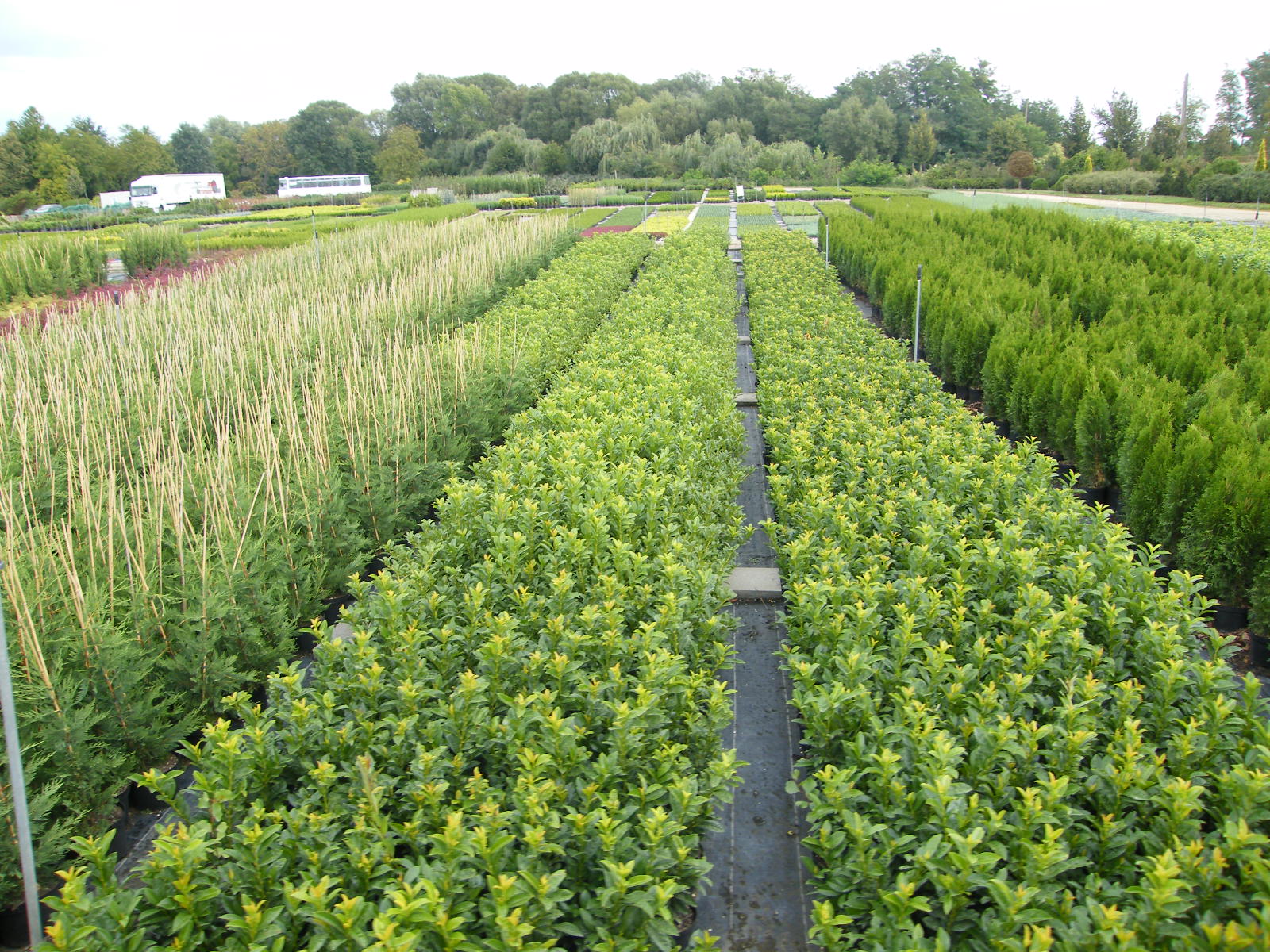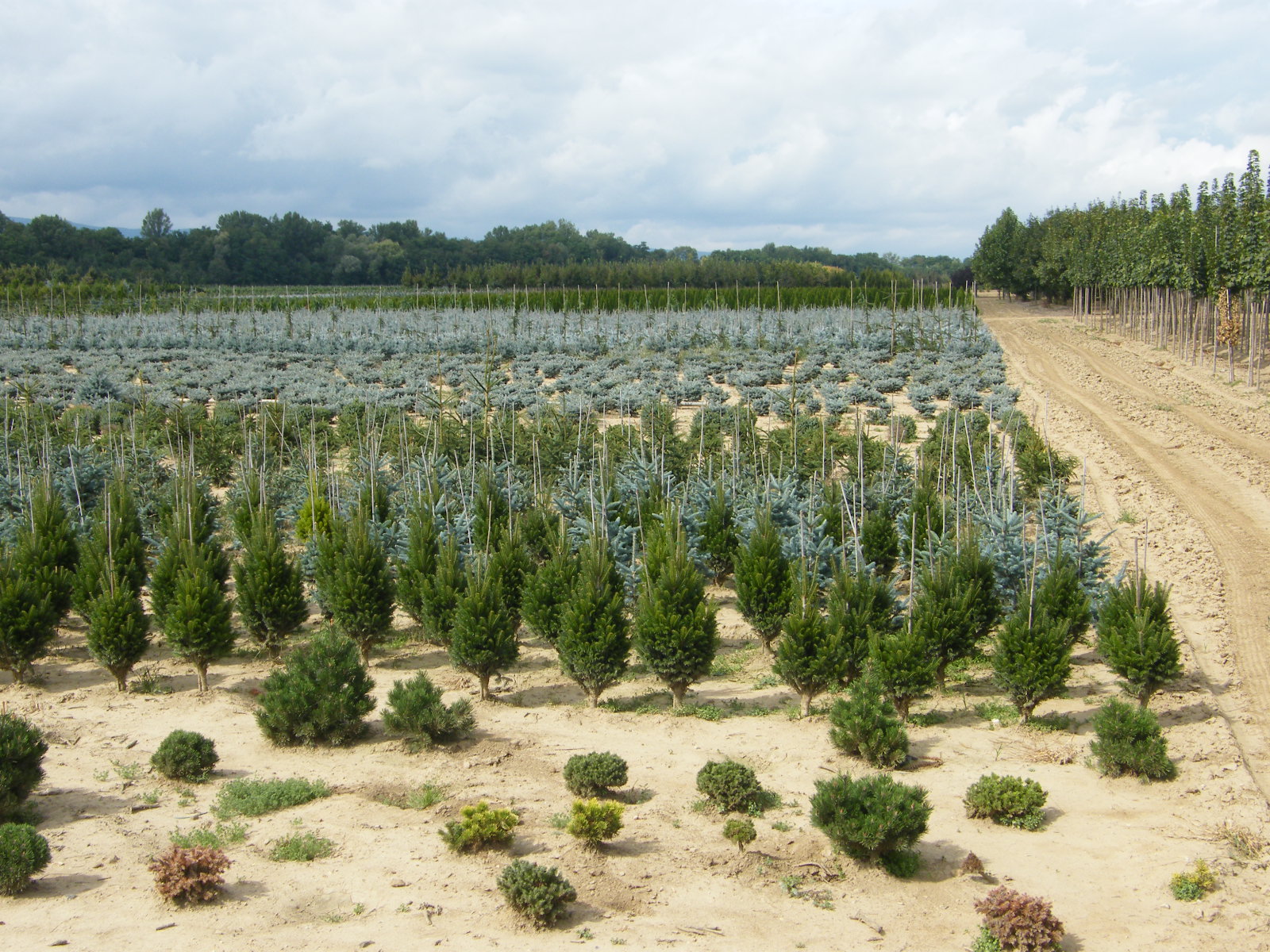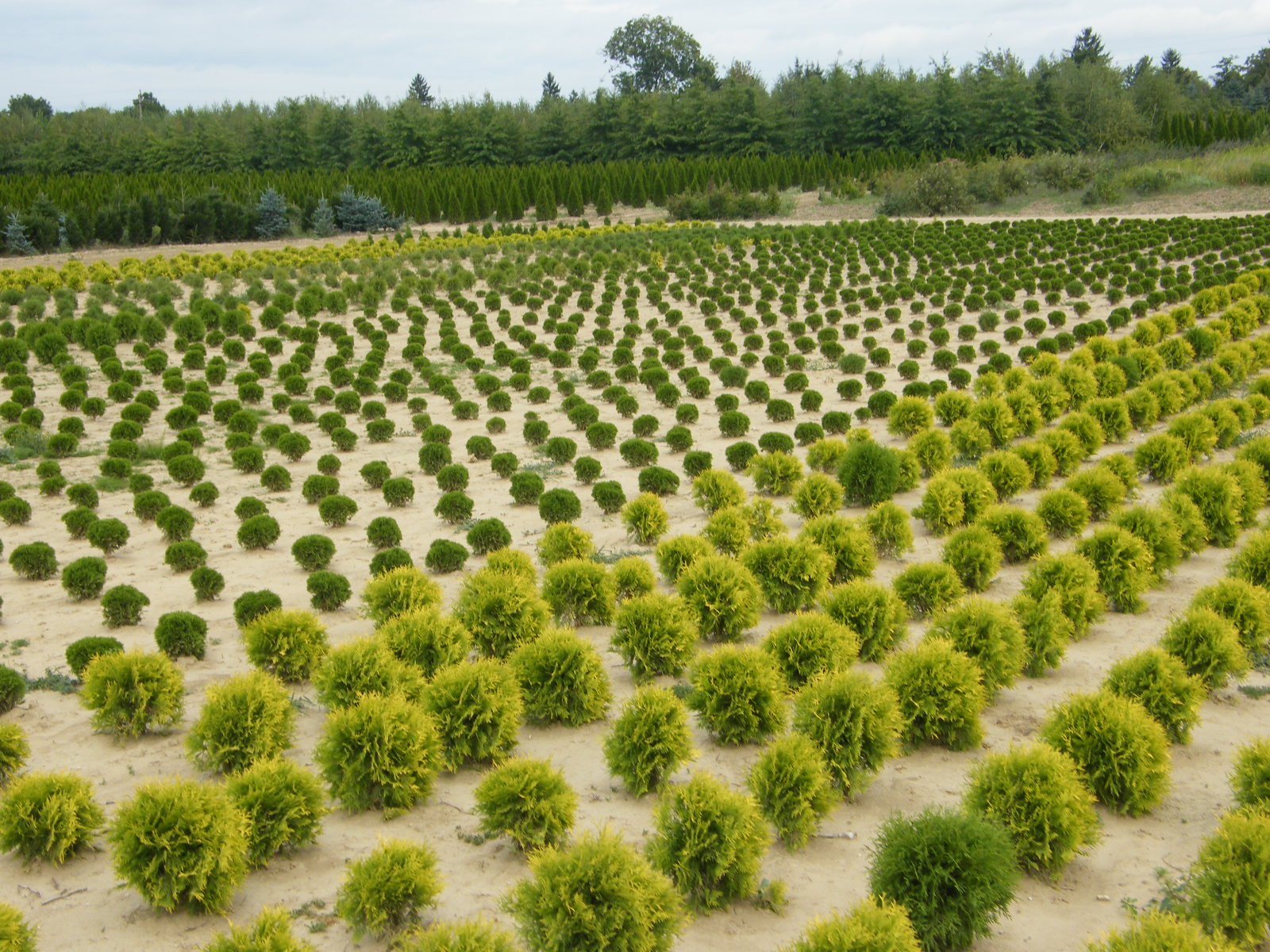1. Past, present and tendencies of the Hungarian ornamental plant production
Authors: Péter Honfi – Márk Steiner
1.1. Definition of ornamental plant production and its main sectors
Ornamental plant production is a sector of horticulture, which cares for the propagation, growing and marketing of those plants that functions aesthetic instead of consumption as their main properties are the appearance and the decoration. Beside the aesthetic function, they possess a highly important role in creating of human environment, and to make it liveable, more natural and inartificial. Their value is getting higher and higher because of the urbanization[1], as recreation and amenity areas, parks, greenings, or decorating interior with plants, play a remarkably important role in the population lives in urban areas.
Ornamental plant production includes two main branches: the open ground and the protected cultivation which also cover wide range of activities.
The main areas of the open ground cultivation:
- ornamental tree nursery production, producing ornamental trees and shrubs,
- growing of rose bush, which is a specific ornamental tree nursery production, but it builds a special area by its importance,
- perennial plant production,
- flower bulb production,
- flower seed production,
- open ground cut flower production,
- dry flower production,
- open ground pot plant cultivation and flower transplant production (mainly pot chrysanthemum and biennial plants).
The main areas of the protected cultivation:
- cut flower and the cut foliage cultivation,
- producing pot flower and pot foliage plant,
- growing of annual and biennial ornamental transplants,
- producing propagating material of ornamental trees and shrubs.
The whole spectrum of the ornamental plant production can not be covered in this current learning material, instead of that we try to give an impression of the mainly important Hungarian branches, the modern technologies and the new trends and tendencies.
1.2. The beginning and the development of the ornamental plant growing
Beginning of deliberate ornamental plant production goes back to the ancient history, although the desire for beauty is likely to rise in the Prehistory, it may be the same age as the socialized human culture. It is difficult to name the accurate beginning of the cultivation, because the crops were leveraged in two ways, and it caused the usage of ornamental plants initially.
It is no doubt that the history of the ornamental plant production could be related to the ancient civilazation the most. According to the written documents, Egypt, China and Mesopotamia might be the cradle of ornamental horticulture as well.

II. Pharaoh Ramses and his wife Nefertiti sacrifice lotus to the goddess Isis
Egyptians donate many bouquets to the temples in the centuries B.C., which amount presumes some volume of production. Lotus (Nymphaea coerulea ) was their most popular flower, which symbolised Goddess Isis, but lily and rose were also known at this time. Some specific flowers were also valued by the Roman culture, moreover some vestiges of flower farms were found in ruins of Pompeii. Floriculture and the profession of the ornamental plant growing have spread together around Europe by the conquest of Roman Empire.
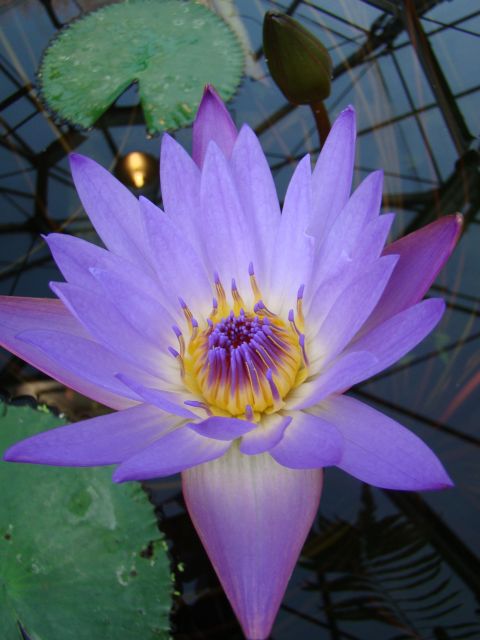
Nymphaea coerulea
In the middle ages, plant growing and so the ornamental plant production took place mainly in the protected garden of monasteries and fortresses. “Oldest” ornamental plants could be found among fruits, herbs, and vegetables, and spread around the gardens of inhabitants, peasants, and tenants.
Ottoman conquest and the Age of Discovery augmented the spectrum of horticulture and the ornamental plant production with countless new species. Lots of unknown plants were taken to Europe by conquerors, travellers and explorers, and at the same time the developing technology allowed to maintain of these precious and extraordinary plants during and after delivery. The first greenhouses were established in baronial and botanical gardens, where significant exotic collections could be developed. Main European growing and breeding centres were established this time in the Mediterranean Seacoast, (Italy and France) in the Netherlands, Germany and England.
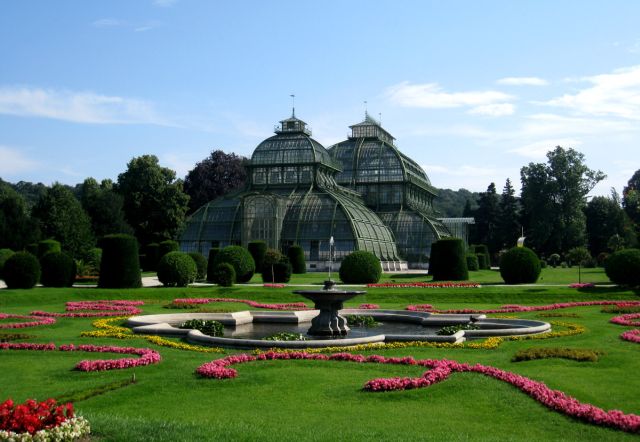
Palm House in Botanic Garden Schönbrunn
1.3. The beginning and development of the ornamental plant production in Hungary
The Hungarian ornamental plant production can be divided into four larger periods:
- from the beginning to 1880,
- from 1880 to World War II,
- from World War II to transition,
- and from transition to today.
The beginning
Similarly to the European history, the ages of the roman conquest plays the main role in the history of Hungarian ornamental plant production, the first originally not endemic species got to the Carpathian Basin in that time presumably. After the Hungarian conquest, in the time of the reign of Árpád dynasty, the „hortus” (garden) word in deeds give information about the starting of the cultivation. The famous monastery gardens were built this time too.
Floriculture and ornamental plant growing developed forward during the reign of Anjou and Hunyadi dynasties, and it is known from the written documents of this age that hanging garden of King Mathias was famous all over Europe.
During the Ottoman conquest and occupation the gardens went through a large destruction in the country as the continuous battles blocked the horticulture cultivation. But also many important plants, that became ordinary, moreover main cultures of today, were brought by the conquerors. One of them is the tulip due to Busbecq[2]. The ornamental plant growing was separated from the vegetable and fruit growing around this time in the Kingdom of Hungary.
The first outstanding horticultural work in Hungarian language is published by János Lippay[3]. Posoni Kert (Garden of Bratislava) includes many descriptions of ornamental plants and production technology, too.
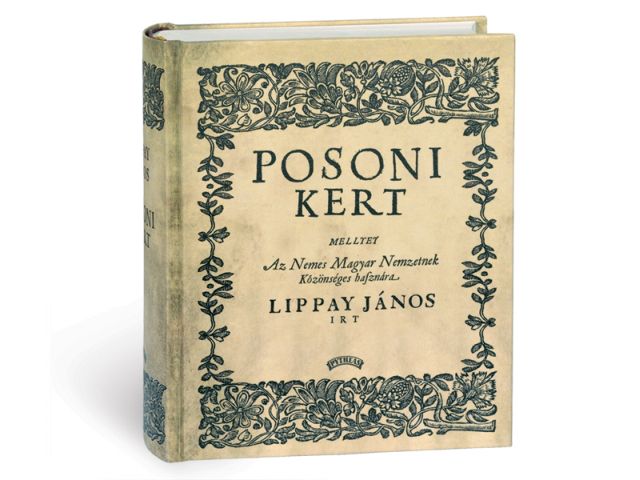
Reprint of Posoni Kert (Garden of Bratislava)
Collecting plants became a rage in Hungary as well, aristocrats collected rarities competing against each other and by the 17-18th century many ambitious and rich plant collections were developed in manorial gardens.
By 19th century, ornamental plant production approached today’s wide richness of species and varieties, or even surpassed some afterward periods. In 1823, more than 3000 species and varieties were registered, in the garden of Prince Eszterházy, Kismarton. Even 50 type of geraniums counted as novelties were registered in rudimentary greenhouses of Austro-Hungarian Empire.
The development of Hungarian ornamental plant production from 1880 to World War II
The evolution of Hungarian citizenship has speeded up just from around 1880.
In that time, the development of the ornamental plant production was based for example on the Royal Castle Garden of Buda and the Botanical Garden of Eötvös Lóránd University[4], or some baronial gardens (e.g. Eszterházy, Festetics). The Austrian and Czech specialists worked here had a deep impact on the development.
Famous parks and gardens were built this time and special species, exotic plants were grown by the newly opened gardens. The Arboretum of Buda (1893-94), Kámon (1892) and Szarvas (around 1890) and the Botanical Garden of Vácrátót, were found this time, and started the horticultural secondary and higher education.
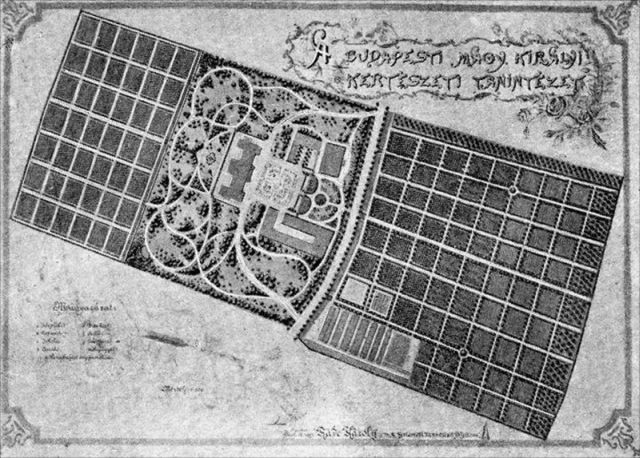
Layout of Buda Arboretum, the area of the Hungarian Royal Horticultural Academy, presentation of the buildings, greenhouses, plantations and the Upper Garden (Plan: Karl Räde, 1893)
Due to the growing evolution of citizenship, the urban population increased extremely and had to miss the „luxury” of having own garden. The answer to this phenomenon was the opening of ornamental plant farms on the border of Budapest and other big towns, which could supply the flower needs of towns.
After World War I, development of private and manorial gardens started just from 1930 again. Most ornamental farms were family properties, and some of them proceeded with international trade, for example: Kellner (Budapest), Deutsch (Hatvan), Corchus (Hatvan), Czeglédi Nagy (Hódmezővásárhely) and Kovács (Szentendre). The ornamental plant production was the same as the average of that time, the area of the greenhouses were 1000-5000 m2 , and there were mixed farms, which grew vegetables, too.
The flower seed production (Mauthner, Monori) was outstanding this time, which could be carried out more effectively and safely in the Hungarian climate than in Western Europe.
From World War II to transition
During the World War II the surfaces of greenhouses were completely damaged, the ornamental plant production stopped at all. The situation of the ornamental plant growing changed completely after the war; it was diminished of necessity in the time of reconstruction.
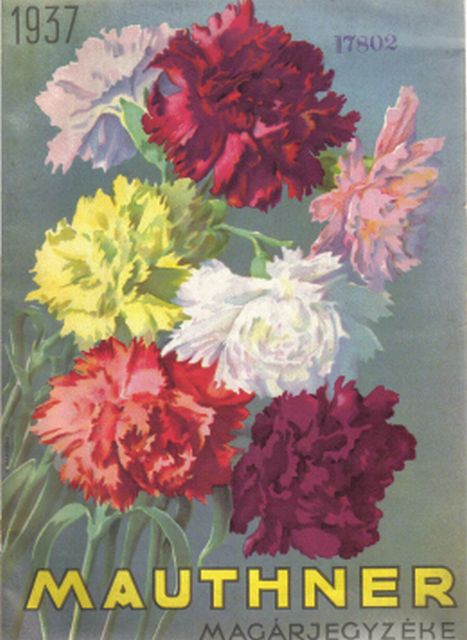
Seeds price list of the Mauthner Gardening, founded in 1874
Later, in the end of 1940s and in the beginning of 1950s, the small ornamental plant producers and private farms started the growing first, but the collectivisation gained on this sector too, and became the state farms and cooperatives. The production was combined with vegetable cultivation, the open ground cut flower cultivation (Chabaud carnation[5], china aster and gladiolus) and the ornamental plant seed production were developing this time.
In the early 1950s larger greenhouse surfaces were found by the big cities due to the credits given to the purpose of developing the vegetable cultivation. An average surface of greenhouse was 1000-2000 m2, the applied type was the so-called „block of Gyula[6]” covered by hotbed windows, completed with the traditional hotbed windows [7] Protected cultivation of carnation and traditional chrysanthemum ( traditional chrysanthemum growing: cultivation starts in open ground, specialized for disbud varieties, originally without any blackout, soled in All Saints Day) were in progress of developing and so the production of the rose, which was grown with winter resting.
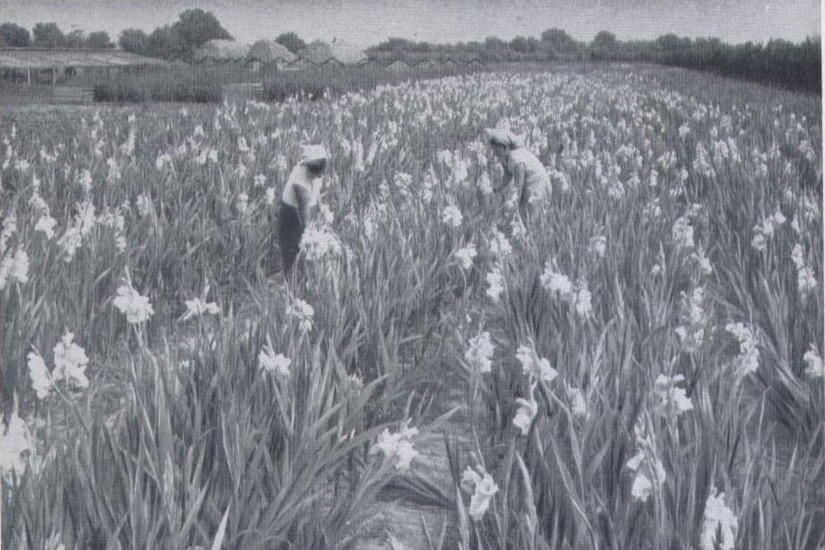
Large-scale cultivation of gladiolus in the 1950s, Horticultural Company, Szeged (Source: Domokos, 1967)
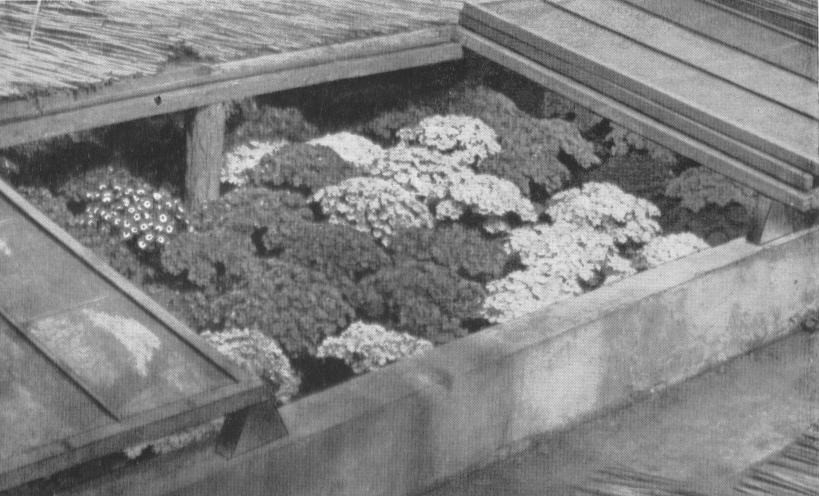
Senecio cruentus seed production in Dutch bed
Békéscsaba Garden Seeds Growing Company (Source: Domokos, 1967)
From the early 1960s, the main purpose of the researches and the Hungarian production were the lower energy demanded cultures and to make the technologies more efficient and developed (nutrient supply, solving the problems of growing medium). At the end of this decade large expanded greenhouses were built (with the use of credits), which were well-developed technologies and innovations in the standard of that time. Among the newly built plants were the partly thermal water heated Southern Hungarian and some established also in the district of Győr. About 32 hectares of new greenhouses were built, which was allowed the production for export, too. However, until transition self-sufficiency and exports – mainly inside of the Comecon countries – were typical of the production. Ornamental plant products were protected by 40 % of safeguard duty until the end of 1980s, which ceased after Transition.
The development of living standard allowed the production volume and the growing surface to increase.
From the beginning of 1970s, – now, without any governmental credits – 30 hectares of new ornamental plant production surfaces were found, the outworn surfaces decreased. The cultivation under plastic commenced, and also the technology structures of the so-called Industrial Ornamental Plant Production System.
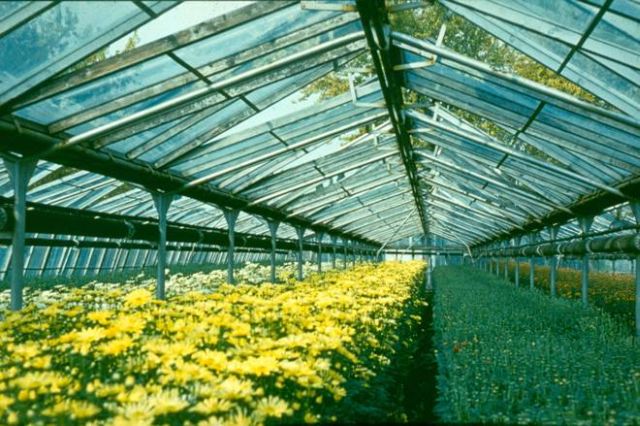
Production of cut chrysanthemums at the end of the 1970s
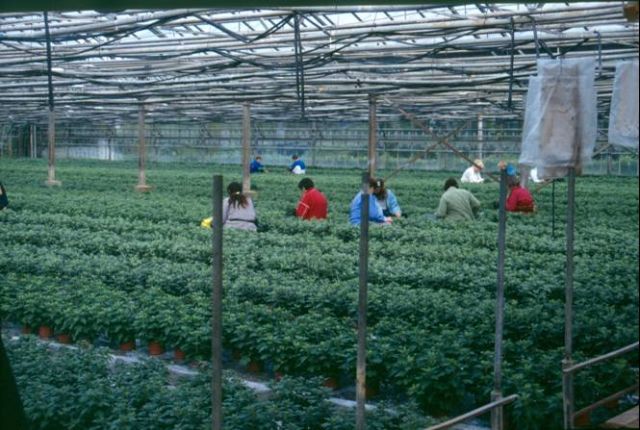
Production of pot chrysanthemum cuttings at the and of the 1970s
From transition to today
After transition (1989-90), the external trade of the ornamental plants was not allowed exclusively to the companies with the right, but the import was raised also from Western-Europe or other lands in the Hungarian market. The Hungarian production was awakened by new varieties and technologies, but the competitiveness was deteriorated by the gradual reduction of the safeguard duty. The greenhouse technologies became outworn and uneconomical to this time, which made the situation worse. The production was discontinued in a part of outworn glasshouse surfaces, but the cultivation under plastic increased, since many of the vegetable production changed into ornamental plant production. From 1994 the surface of glasshouses grew, but with using demolished glasshouse, which counted outworn in Western Europe and was disadvantageous in the international competitiveness.
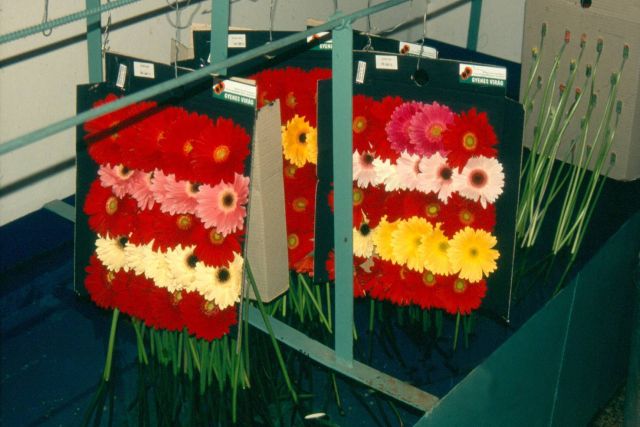
Conditioning of cut gerberas appended on cardstocks
The direction of development is determined by worldwide changes nowadays. The prodoction is limited by the cheap and large amount of imports; thereby the only cultures could be competitive who,
- hard or unable to deliver (fragile, sensitive, easy to go yellow),
- broad or heavy, burdensome and expensive to deliver,
- local market requests outstanding quality in the production (e.g.: unknown varieties in other markets), or big demand is needed for short period,
- may be produced in open ground in the Hungarian climate, or their greenhouse cultivation could be cost-effective.
Nowadays, completely responsible statistical data are unavailable about the Hungarian ornamental plant production – in the absence of central database, but 10-12 thousand families can earn a living from strictly production, and there are more than 5000 flower shops and hundreds of retail plant nursery operates in Hungary presumably.
1.4 Some remarkable persons of the Hungarian ornamental plant production and breeding
The review about the Hungarian ornamental plant production would not be complete without introducing some professionals influenced the production, helped the developmental processes. The list is non exhaustive, but all the some noted specialists will be highlighted in all the significant periods, from the beginning to today.
Árpád Mühle was a significant figure in ornamental plant growing at the turn of the 19th and 20th centuries. He published the first book about chrysanthemum growing in Hungarian (The breeding of Chrysantemum – 1902), which introduces his experiences gained during his studies from western countries and represents several varieties. He also dealt with rose breeding and published a catalogue of 1100 types of Canna in 1906.
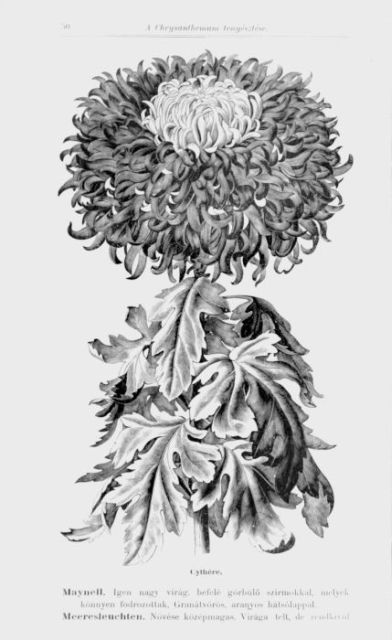
Illustration from book of Árpád Mühle: The breeding of Chrysanthemum (1907)
Count István Ambrózy-Migazzi (1869-1933): lawyer, dendrologist, botanist, and introducer and breeder of evergreen plants. He was founded the Arboretum of Malonya and Jeli, and he aimed to create „forever green” gardens in Hungary with introducing and breeding numerous evergreen species.
Rudolf Geschwind (1829-1910): German rose grower and breeder. Although he studied to be a forester, and started his career as a forester near to Selmecbánya, and after in Korpona, he did not pay much attention to the forestry, his real passion was to breed roses, he created hundreds of varieties.
György Griger (1879-1946): gardener and ornamental plant breeder. He interested mainly in protected cultures, especially Pelargonium, Canna, Chrysanthemum, Dianthus and Antirrhinum varieties. A famous variety of geranium, Pelargonium hortorum 'Hungaria' is created by him. He bred hundreds of new varieties, which awarded in several Hungarian and international exhibitions.
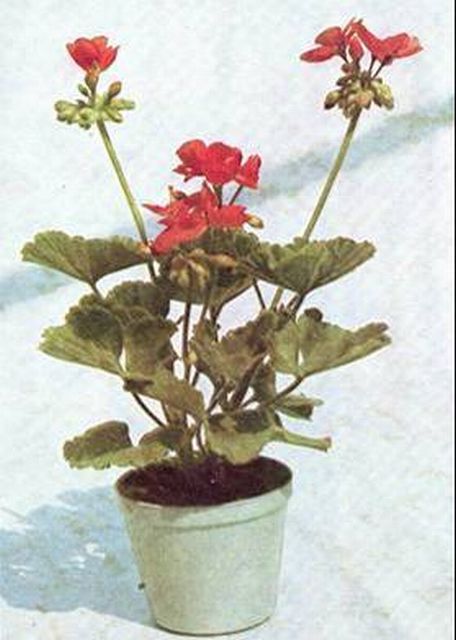
Pelargonium hortorum ’Hungária’
Ferenc Pohl (1883-1961): gardener. He was the leader of the urban horticultural company of Debrecen from the end of 1920. He suggested the building of graveyard in Nagyerdő of Debrecen and the incomparable sunken garden by Museum Déri. Ornamental and fruit tree nursery and a fruit mother orchard were found by him choosing and propagating the right varieties according to the dry weather conditions of Great Plain. One of his standing works was the preparation of low and rich flowered Canna varieties with crossbreeding.
Gyula Magyar (1884-1945): horticultural engineer, plant breeder, an outstanding person of the plant breeding before the World War II. After his studies in Hungary and abroad, he was eager to boost the Hungarian fruit growing and horticultural breeding. New varieties of fruits, kitchen garden and the ornamental plants were bred by him. He was a lecturer of the Royal School of Horticulture from 1924 till his death. He was a prolific expert writer. At first, he created new ornamental plant varieties mainly (between 1904 and 1929 50 ornamental and 2 fruit varieties), and then he bred vegetable species from 1930. The Hungarian honeysuckle (Lonicera × tellmanniana) is one of his main breed which is still famous today. He bred roses and perennial plants, and orchid, Billbergia, bromelia, cyclamen and geranium species from protected cultures.
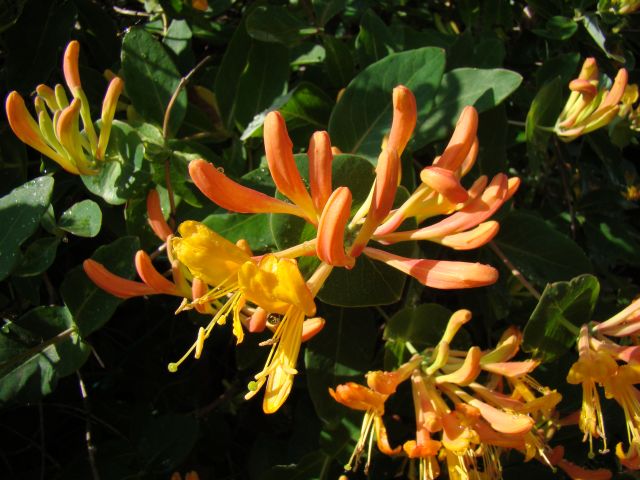
Lonicera × tellmanniana
János Domokos (1904-1978): horticultural engineer, professor, candidate. His diploma was exhibited by the Royal School of Horticulture in 1931 then he studied botany, geology and palaeontology in Budapest and Szeged. From 1933, he was a trainer, then a lecturer of dendrology and ornamental plant growing in the Royal School of Horticulture. He founded the ornamental plant department in Horticultural Research Institute in 1945; between 1950 and 1957, he was the head of the department and then its headmaster between 1957 and 1959. From 1948 to 1969 (to his retirement), he was the head of Department of Floriculture and Dendrology in the University of Horticulture. He paid extensive attention to the utilization of the Hungarian climate in the production (e.g.: flower seed production) and also worthy of mention is his aim to create gardens, which harmonise with the surrounding landscape. Numerous ornamental trees and shrubs were selected from the Hungarian flora by him.

Cotinus coggygria ’Kanári’, breeding of János Domokos
Zoltán Kováts (1924-2010): annual plant breeder, titular professor, doctor of science. A significant flower breeder, gained international successes as well, created numerous annual varieties through sixty years, which are able to tolerate exceedingly the hot and droughty summers in Hungary. The movement for making the Hungarian towns and villages flowery, was his main purpose, numerous planted varieties in Hungarian public places are due to his action. The most famous plants he bred are the varieties of common hollyhock (Alcea rosea), plumed cockscomb (Celosia argentea var. plumosa), black-eyed Susan (Rudbeckia hirta) and marigolds (Tagetes patula és T. erecta), but he bred many other species, too.
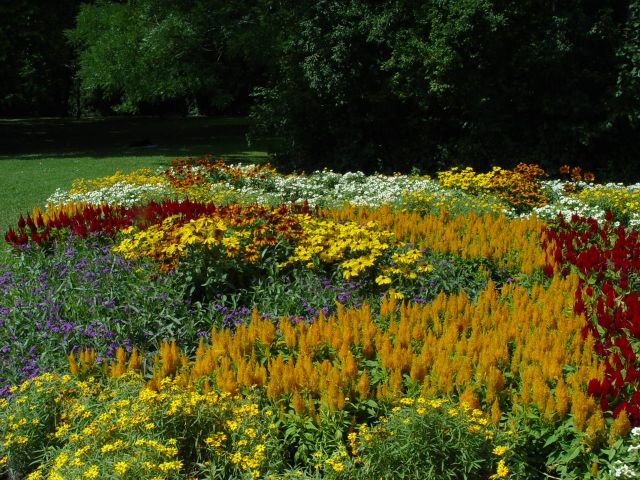
Hungarian bedding plant varieties in the Margitsziget
Gergely Márk (1923-2012): horticultural engineer, rose breeder. After a difficult childhood and youth ages, he gained his diploma in 1950, in the College of Horticulture, and started to work in Budapest, the Horticultural Research Institute. He was the first, who gathered the Hungarian rose varieties, about 1200-1400 taxa, then began to enlarge the collection from abroad, too. The big Hungarian rose collection – the first Rosarium – was found by him in the area of Research Institute, in Budatétény. He arranged exhibitions, directed the rose garden, and worked as a breeder which he continued after his retirement in Törökbálint. More than 600 registered varieties show his breeder work. He took part also in international exhibitions with him varieties and won a lot of prestigious awards.
Béla Nagy (1929-) horticultural engineer, professor, doctor of agriculture. He was the lecturer of the College of Horticulture and Viticulture from 1959, and the head of the Department of Floriculture and Dendrology till his retirement (1991) and between 1971 and 1980, the dean of the production department. As a head of the department, he placed the education of ornamental plant growing in new bases: the economy became highlighted, the scientific validity and practical approach became more important. His previous students became the leader professionals of horticulture both in public and private sectors. His scientific and literary workings are enormous: he developed new technologies and owns patents. In 1960s, he introduced the nutriculture which is often applied by the horticultural profession as a profitable growing method. As a member or a chief of may horticultural and social corporation, he gain merits in the regard of horticulture.
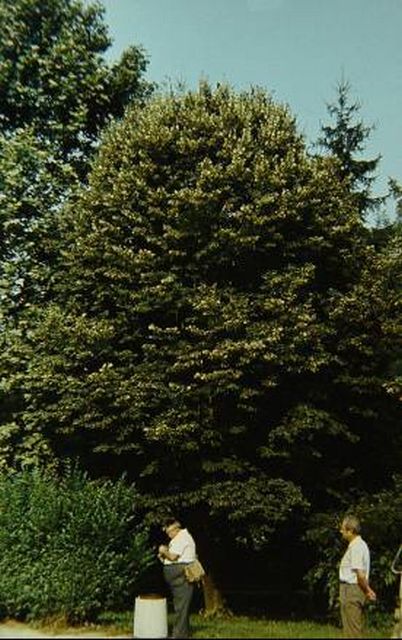
Béla Nagy on a collecting trip to Balkan
Imre Tóth (1932-): horticultural engineer, dendrologist, titular associate professor. At the beginning of his career, he worked in the Botanical Research Institute of the Hungarian Academy of Sciences, and managed the nursery of the Horticultural Company of Budapest for 22 years, and now, he shares his experiences in the horticultural education for 20 years. He took part in the breeding of numerous varieties, author or co-author of several books of dendrology. His most significant work was published in 2012, a Handbook of broadleaf ornamental trees and shrubs, which is a unique work of the Hungarian dendrology, discussing 911 species and 1390 varieties through 789 pages.
József Retkes (1936-): horticultural engineer, titular associate professor. He has been dealing with ornamental plants since 1951, at the beginning of his career, he worked in many sectors (annual plant growing, tree nursery, forestry breeding), then between 1970 and 1995, the master gardener later chief engineer of the Horticultural cooperative of Szombathely and helped to develop the company significantly. The growing of Cymbidium orchid was introduced by him in Hungary; he was the first who arranged flower transportations in the country, the first in introducing micropropagation in industrial conditions. The first pot plant varieties were grown by him from the 1970s. After transition, he took part in procreation of horticultural associations and Flora Hungaria Wholesale Flower Market, and managed and helped to create beneficial conditions for the Hungarian growers. Between 1995 and 2004, he directed the Hungarian wholesale centre, which made the hall to grow from 0.5 hectare to 1.5, it broadened with imported locks, and he initiated profile changes, and computer sales. After his second retirement, he is still working today as a private breeder and professional counsellor.
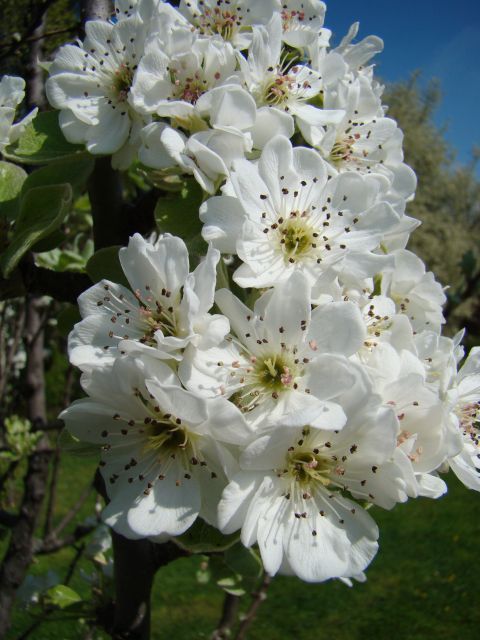
Pyrus nivalis ’Kartalia’ selection of András Terpó and Imre Tóth
Gábor Schmidt (1944-): horticultural engineer, dendrologist, professor, doctor of the Hungarian Academy of Sciences. His horticultural career connects him to the education, the Corvinus University of Budapest (and its predecessors): he worked in the institute from 1969 to 2012. Beside his teaching and research activities, he was both dean assistant and rector assistant, and he was the head of the Department of Floriculture and Dendrology from 1991 to 2008, furthermore he was the professional leader of the Arboretum of Buda from 1975 to 2012. He is the member or officer of several Hungarian and international horticultural associations, editor commissions, and scientific corporations. He is one of the greatest authorities in the Hungarian ornamental plant production and dendrology, and he is known and respected internationally, too. His more than 40 years long experiences in education allowed him to teach 15 courses, and the development of Amenity Horticulture MSc is also related to his name. Hundreds of his publications were published about the selection breeding, introduction and application of the ornamental plants, which includes an accepted patent and 16 nationally recognised new varieties. He dealt with the introduction of about 80 ornamental trees and shrubs, and 60 of them could be utilized in Hungary, too.
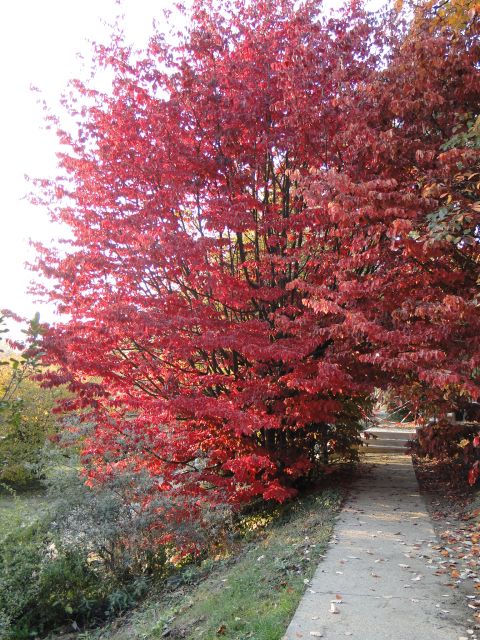
Parrotia persica ’Tűzmadár’ selection of Gábor Schmidt (1990)
1.5 Tendencies and future prospects
The greenhouse ornamental plants are among the most fragile and expensive horticultural products. They need “special” (conditioned) environment, and comparing to their high price, they tolerate the expenses of the long distanced transports. Therefore, their growing technology and the migration of production come before the technologies of open ground ornamental plant cultivation and other protected cultures (e.g. vegetables) with decades.

Production of Begonia elatior propagation material in Kenya Photo: András Treer
The classical production of ornamental plants in greenhouses (tropical flowers, or winter grown temperate zone plants) – as it was presented above – was located to the place where the consumer was: next to baronial castles, or later by big towns and cities. This is reasonable as the live flowers could not tolerate the transports through weeks or months considering the standard of these ages (ship, cart or train). Those who called for these plants, could grow them only nearby.
Later, as the transport became faster and more flawless (refrigerator truck, aeroplane), the production of the tropical flowers were located back where growing conditions are optimal for them.
The process has started after World War II, and still lasts today. The definitive impact was given by the surge in energy prices in 1970.
The process is well-exemplified by the protected cut carnation growing in the USA: from World War II until the beginning of 1950s, the production was concentrated to densely populated East coast, nearby the enormous cities (New York, Chicago, Cleveland). As a result of the development of transport (and cold storage), by 1970s, the carnation growing was located to the southern area of the US, to the sunny state of Colorado, California and Florida. It was peaking at 600 million flowers in 1957, which has covered almost the whole American market. Today, cut carnation consumption is a billion flowers approximately in the USA. The 95% of this amount is imported from South America (especially from Columbia). Only the 4-5% is produced by (small) local farms, mainly low-labour-intensive spray types in the summer season. The tendency is similar in Europe, only with about 20 years delay. European Union with dismantling of internal frontiers has contributed this process. Own carnation production fell sharply in large and developed countries (Germany, England, France), most of the demanded amount is imported from South Europe, South America and Africa. This tendency is could also be noticed in Hungary increasingly.
Migration is influenced mostly by the following factors:
- climatic conditions,
- cost of labour,
- heating costs,
- transport costs,
- solvent market (often it heads to South or East as well!),
- other factors, like politics or economic situation, tax- and support systems, environmental protection regulation, etc.
Besides the abovementioned processes, the market of the ornamental plants is world wide expanding, although, there have been instance where it declined sharply as the reason of economic crises of last years.
Despite the migration, some production is still remained in the motherland from every culture. The greenhouses surrounded by the cities, are maintained or built originally as sales (transit) greenhouses, instead of growing greenhouses.
As a result of these processes concentration and centralization were strengthened and the growers are specializing, the average surface of the farms is increasing (both in open ground and protected cultivation). Multinational companies are established (especially in the field of trade), the role of supermarket chains is getting more and more important in trade.
The rise of the overlap with open ground and protected cultivation is noticeable. Traditional nursery or perennial cultures are grown as potted ornamental plants (e.g. Aucuba, Skimmia, Campanula), while Mediterranean or the subtropical plants, which grow in Hungary as pot plant, are grown as open ground plants in South Europe.
The environmental protection became even more significant both in producing and consumption and its regulation is getting stricter.
1.6 Present status and tendencies of the open ground ornamental plant production
Previously, it was tried to give a general picture about the development of ornamental plant production, but the processes of open ground cultivation, and mainly the ornamental tree nursery are differ from above, that is why they are mentioned separately.
Of curse, globalisation has also notably effects on open ground cultures, however its significance is not so high compared to protected cultures yet. It takes place rather inside the continent, so mainly the European processes will be represented.
Open ground cultivation mostly produced for the local markets in every country, fruit tree growing was dominant in nurseries until 1960s. The first pursuits of the integration appeared between 1960 and 1980, North Atlantic growing region (Oldenburg-Holstein, Germany) was found. The role of the Netherlands became more and more important – counting with the solvent request of neighbouring German market – in both open ground growing and trade, and besides fruit tree growing production of ornamental trees and shrubs was increasing.
The formation of current growing regions of Western Europe can be dated to 1980-1990. The German growing region of Oldenburg-Holstein has the oldest history, and there are other centres in the Netherlands, Belgium, France and Italy.
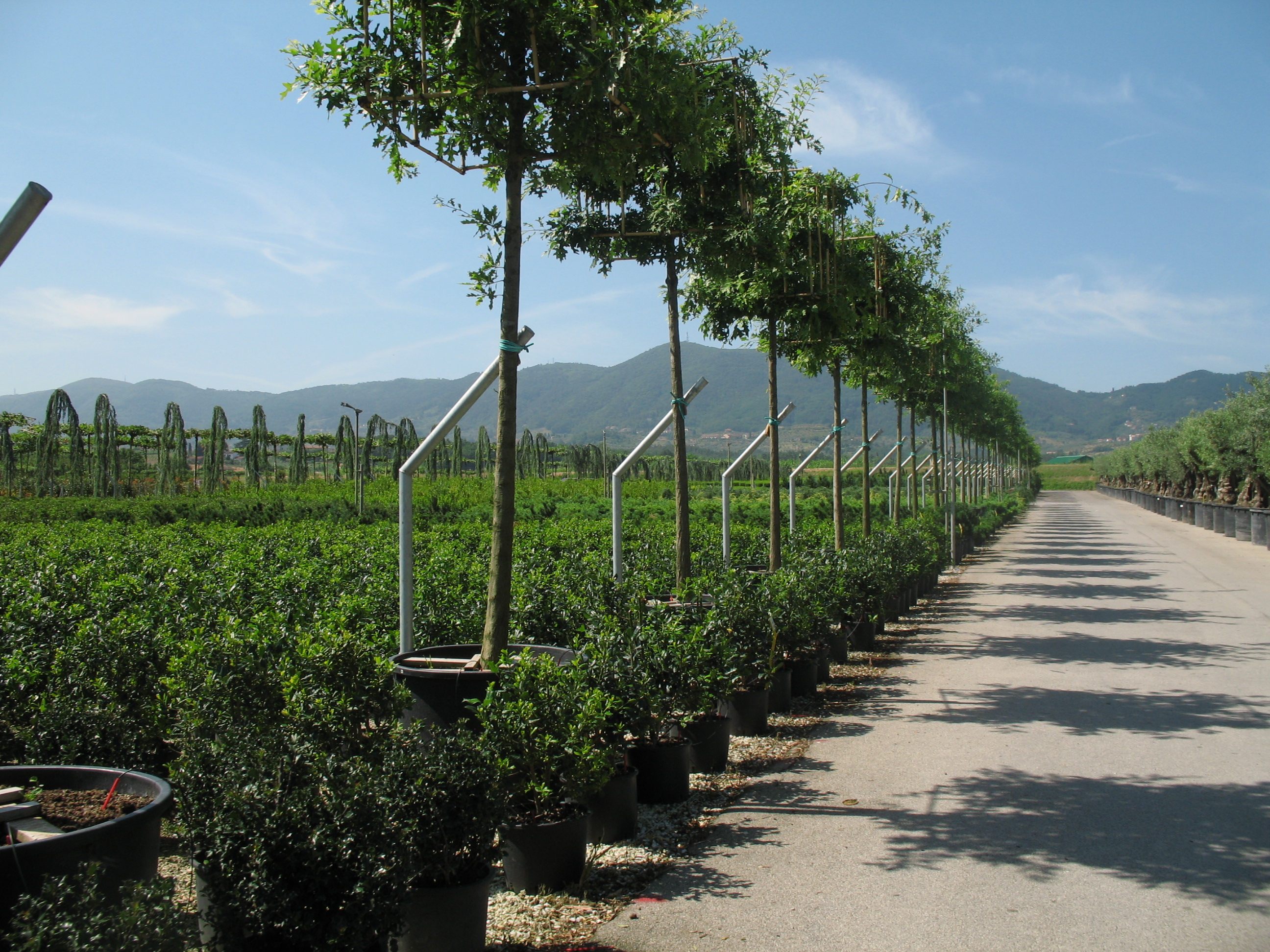
Vanucci Nursery, Pistoia, Italy.
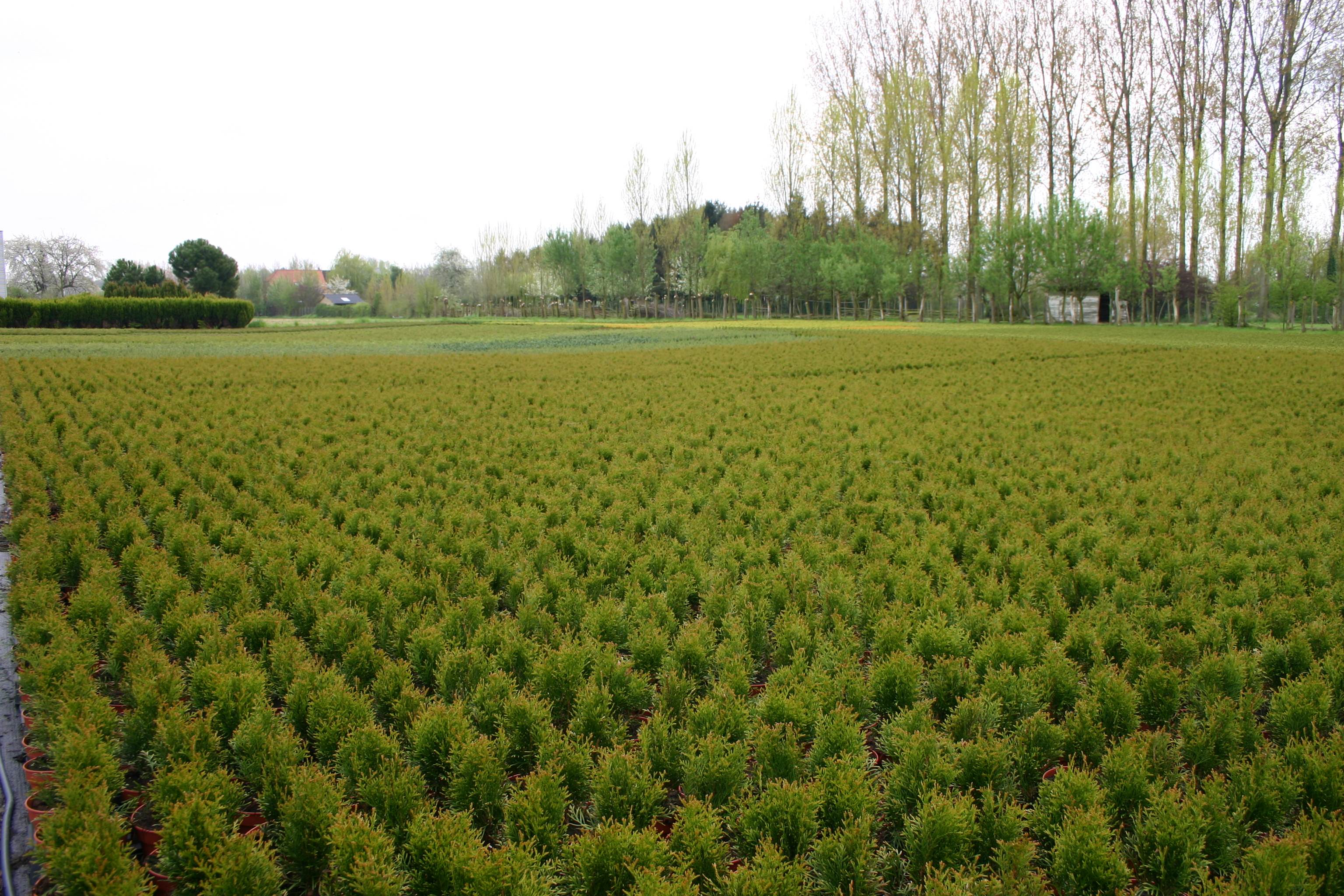
Container nursery in Germany
Group of Comecon countries were unblocked from 1990, thereby the attention of Western European growing regions turned into the East and target the markets of the GDR, Slovenia, Czech Republic, Slovakia, Croatia, Hungary, Russia, Ukraine and Romania. The driving force of the changes was the dismantling of the national boundaries, and as a result, there is a free movement of products and capital among the countries. The rate of the migrant workers (Turkish, Moroccan, etc.) became higher in the horticultural sector.
1.7 Ornamental plant growing regions of Hungary
The most important growing regions were located nearby the biggest markets, in the other hand geographical and climatic conditions were profited.
In the growing region of Southern Great Plain, mainly traditionally protected cut flowers, dry flowers and ornamental tree nursery products (rose bushes, perennials, deciduous plants) are grown. The hours of sunshine is the longest in this region (above 2200 hours), and there is a significant – but unfortunately untapped – thermal water depository which could be available for the growers, too. Earlier, flower bulbs were produced here in high quality and the biggest amount, but currently, the Hungarian production is not or just rarely able to compete with imports. The 60-80% of the Hungarian rose bush production is given by the growing region of Szeged-Szőreg, the main part of rose bushes is exported from here. The production is happening in family business associations and in some bigger companies, thereby product preparation, packing, storage and sale is accomplished by the associations. Due to the location of the region, it possesses important trades toward the markets of Romania, Croatia, and other Balkan countries.
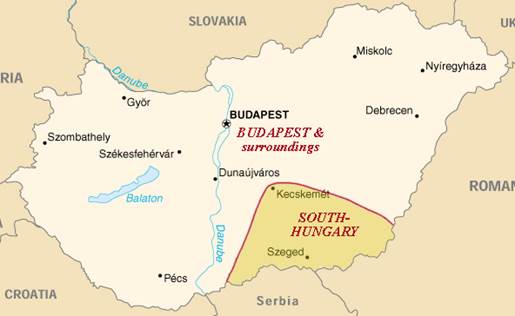
Growing region of Southern Great Plain
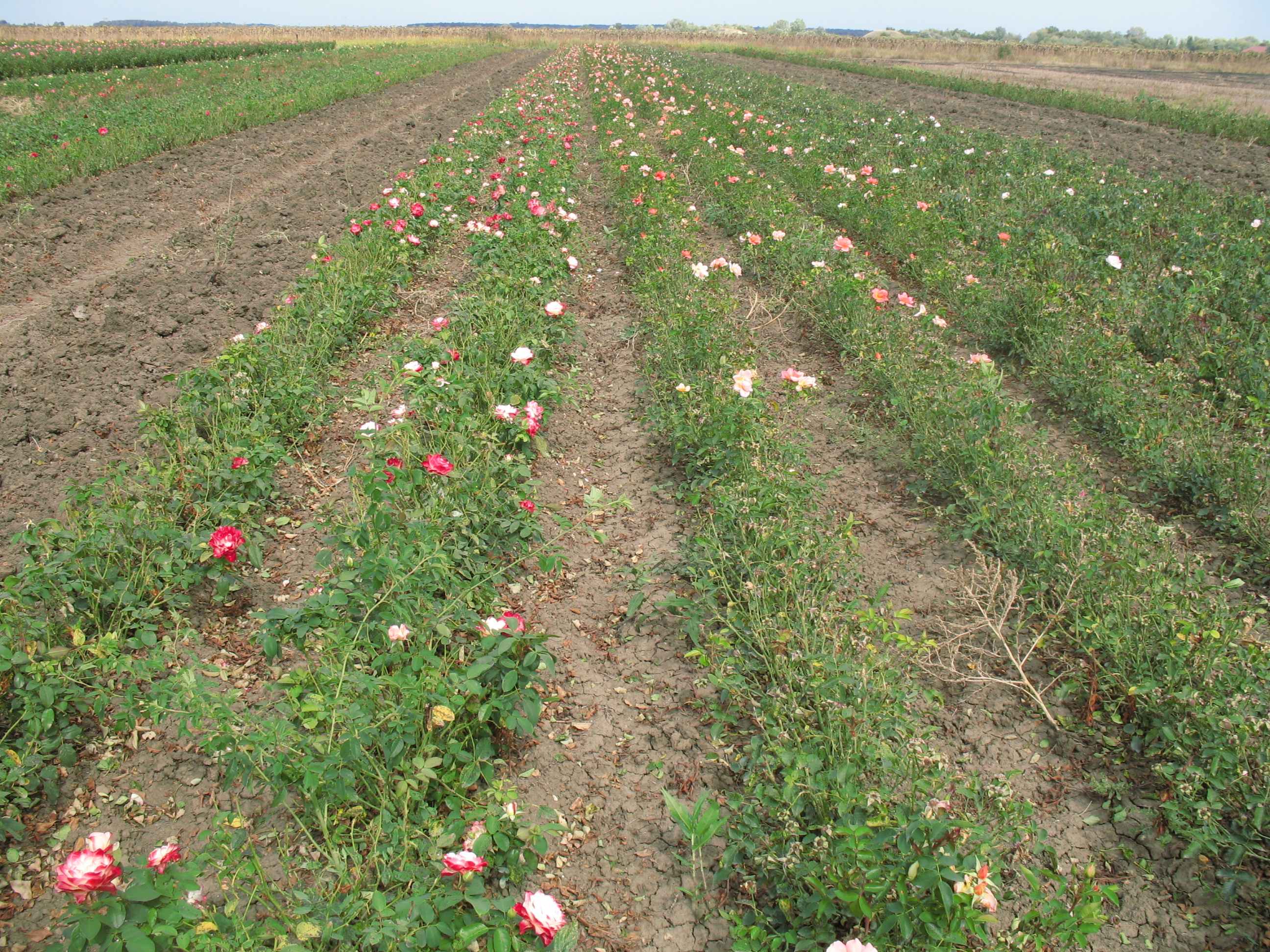
Rose nursery in Szőreg (near to Szeged, Southern Hungary)
Container nursery in Szarvas (Perintkert)
The growing region of Budapest supplies the population of the capital with cut and pot flowers, transplants and ornamental tree nursery products (mainly in containres). It serves the largest amount of consumers and it plays the role of the nationwide distributor centre, too. Among protected cultures both pot and cut flower growing decreased in this region.
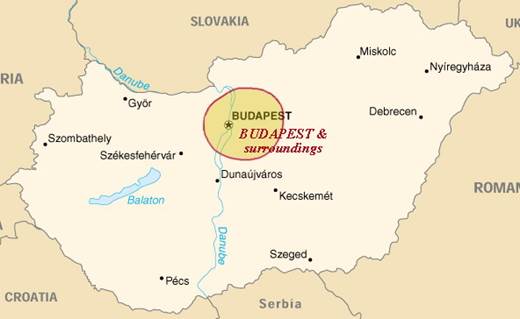
Growing region of Budapest
In the growing region of Győr and nearby, mostly protected cut flower and dry flower are produced due to the relatively long hours of sunshine, which is 1800-2200 hours per year. This region could be regarded as the northern gate of Hungary (toward Slovakia and Czech Republic) regarding the ornamental plant trade. The annual and biennial transplant growing is also significant in the region.
The Western and Southern Transdanubian region (Vas, Zala and partly Somogy County) may have become the most important ornamental tree nursery area in Hungary, due to the favourable climatic conditions it is appropriate for growing fragile evergreen species, besides that, annual and perennial growing is significant here, too. The hours of sunshine is also advantageous (1800-2000), the region is the highest in rainfall in the country and possesses acid soils, which are very rare in Hungary. The trade is affected noticeably by the closeness of Western and Southwestern European countries (Austria, Germany, Slovenia, Croatia, etc.). The main products are the ornamental trees and shrubs, and the 60% of conifers are produced here. Christmas-tree and open ground cut foliage production are also notable in this region.
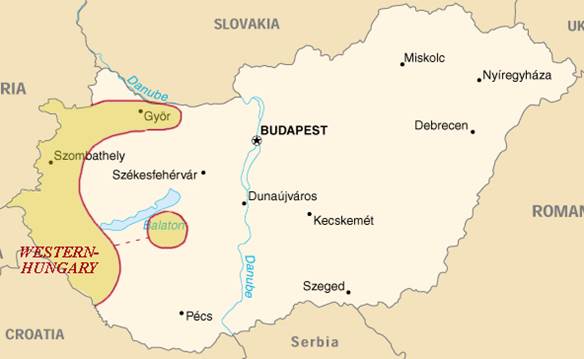
Western and Southern Transdanubian region
PRENOR Nursery, Szombathely
The region of Eastern Hungary could take advantage of the closeness of the steadily growing markets in East Europe (Ukraine, Republic of Belarus, Russia, Romania). The main products of this region are the special grafted trees and the street trees recommended in extensive circumstances.
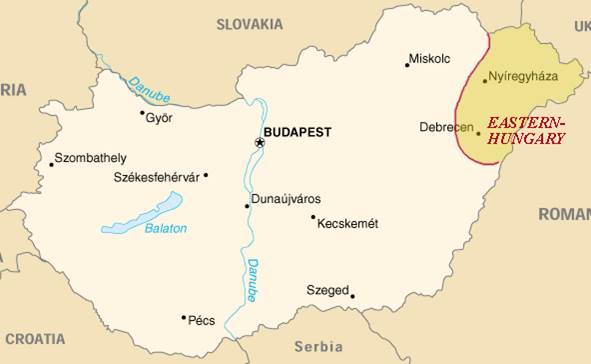
Growing region of Eastern Hungary
Literature
- Domokos J. (1967): Dísznövénytermesztés. Mezőgazdasági Kiadó, Budapest.
- Nagy B. (szerk.) (1986): Növényházi dísznövények termesztése és hajtatása. Mezőgazdasági Kiadó, Budapest.
- Schmidt G. (2011): A dísznövénytermesztés helyzete és főbb tendenciái. In: Tillyné Mándy A. és Honfi P.: Növényházi dísznövénytermesztés. Egyetemi jegyzet, Budapesti Corvinus Egyetem, Kertészettudományi Kar, Budapest.
[1] urbanization: migration into bigger towns and cities
[2] Augerius Ghislain de Busbecq (1522-1592). As a diplomat of Austria worked initially in England, and then for the demand of King Ferdinand I, he was Vienna’s diplomat in Constantinople form 1556 to 1562. He spent a long time in Buda, by the Ottoman court. His main interests were scientific experiments and travelling for special plant collections. He collected plants, bulbs, and seeds around Constantinople, which he gave to botanists, among them to Clusius in Hungary, and the Kaiser’s garden in Vienna and Prague
[3] János Lippay (1606-1666) Jesuit monk, scientist and teacher. He was born in Pozsony (Bratislava), then learned in Vienna and became also here a monk. His researches aimed the Eastern languages mainly; he was in charge of teaching Eastern languages in the University of Graz and Vienna. He returned to Hungary in 1643, and became the headmaster in the boarding house of Győr and prior in Trencsén. In his last years, with intervention of his brother, György Lippay archbishop, he was permitted to spend his rest of life in the garden of archbishop. during this time, he studied the world-famous botanical garden, the literature of horticulture and he practiced his knowledge too. This few years were enough for him to precede his contemporaries in the literature of horticulture and leave an enduring memory in Hungarian horticulture history.
[4] The Botanical Garden of Eötvös Lóránd University: The first botanical garden in Hungary, found by Jakab Winterl in 1771 in Nagyszombat, at the time. It was created to help the Medical and Pharmaceutical training, but it was in charge of the researches of the Hungarian flora as well. After more relocations, it was placed to Budapest, Józsefváros in 1847. It gives place also to the Hungarian Association of Arboreta and Botanical Gardens.
[5] Chabaud carnation: ornamental annual plant, propagated by seed sowing, intense fragranced type of carnation, adequate for open ground cultivation
[6] Block of Gyula: the first tall greenhouse, which broke up with the previous tradition of the sunken houses, but covered by hotbed windows.
[7] Hot bed: rudimentary greenhouse type, sunken , unheated, or rather heated by the degradation of the organic manure, which was used by the vegetable- and ornamental plant production. It was covered by so-called hotbed windows. The further developed type of that is the „Dutch hotbed”, which is a sunken greenhouse.
